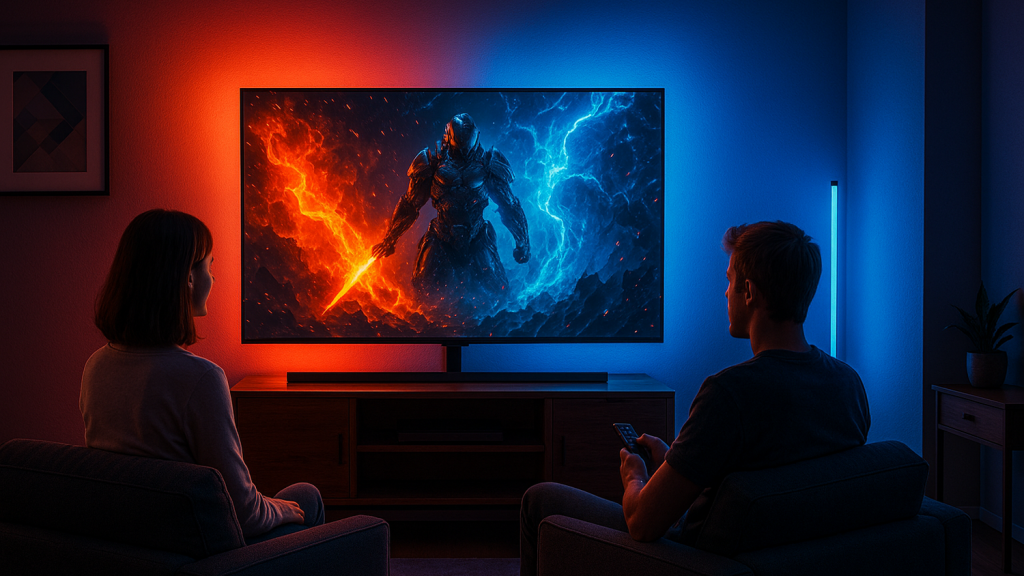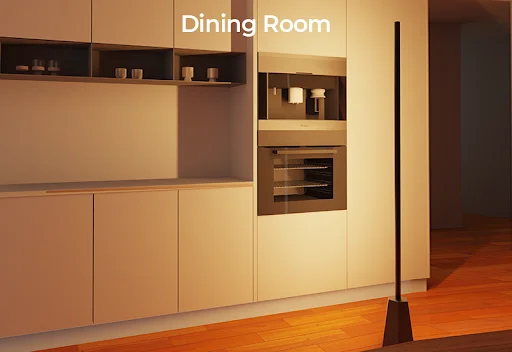Working from home has become more common than ever, and for many people, the home office has turned into one of the most important rooms in the house. Yet, while most of us focus on finding the right desk or ergonomic chair, one essential design element often gets overlooked—lighting or Lighting Matters for Productivity. The quality and type of light in your workspace can make or break your productivity, mood, and even your physical health.
The Connection Between Light and Productivity
Lighting affects more than just visibility—it directly impacts how alert, focused, and motivated you feel throughout the day. Natural daylight, for example, helps regulate our circadian rhythm, which governs energy levels and sleep cycles. When your workspace lacks adequate light, your brain produces more melatonin, the hormone associated with sleepiness. The result? Fatigue, eye strain, and reduced focus.
Research shows that well-lit environments increase concentration and cognitive performance, while poor lighting can lead to headaches and low motivation. Simply put: good light equals good work.
Featured gem! A story that’s stealing all the attention for a good reason.
The Challenge of Home Lighting
Unlike traditional office buildings, home offices often share space with living areas or bedrooms. That means lighting is rarely optimized for long hours of screen work. Overhead fixtures may be too dim, or too harsh. Natural light may only hit one side of the room.
To stay productive, you need a lighting setup that adapts to your needs throughout the day. That’s where layered lighting and smart technology come in.
The Three Layers of Effective Workspace Lighting
Ambient Lighting: The Foundation
Ambient lighting provides the base level of brightness in a room. It keeps shadows at bay and prevents your eyes from working too hard to adjust between bright and dark areas. Ceiling lights, pendant fixtures, or diffused lamps are ideal for this.
If your home office relies on limited natural light, consider using a dimmable LED system to control brightness as daylight shifts. Balanced ambient lighting reduces visual fatigue and maintains an even tone across your workspace.
Task Lighting: Precision Where You Need It
Task lighting is focused illumination that supports specific activities—writing, reading, or using your computer. A smart floor lamp positioned next to your desk can provide targeted brightness without flooding the entire room with light.
Brands like Decktok design lamps that let you adjust color temperature and brightness with a touch or voice command. Cooler tones (around 5000K) boost alertness and are ideal for daytime focus, while warmer tones (around 3000K) help you transition into evening without overstimulating your eyes.
Accent Lighting: A Boost for Mood and Creativity
Accent lighting isn’t just for decoration—it plays a psychological role in productivity. Soft glows behind your monitor, art lights on the wall, or an LED strip on a bookshelf can make the workspace feel inviting and dynamic. When your environment feels inspiring, your energy follows.
A well-designed Decktok floor lamp can double as both task and accent lighting—functional during work hours, soothing after hours.

How Color Temperature Affects Focus
Not all light is created equal. The color temperature of a bulb—measured in Kelvin (K)—determines how “warm” or “cool” the light appears.
- Warm light (2700K–3000K): Creates a cozy, relaxing environment. Great for unwinding but less ideal for intense focus.
- Neutral light (3500K–4100K): Offers a natural balance, suitable for most daytime work.
- Cool light (5000K–6500K): Mimics daylight, stimulating alertness and improving attention to detail.
The ability to shift between these tones throughout the day can dramatically improve comfort and performance. This is why adjustable, smart lighting solutions are worth the investment.
The Role of Smart Lighting in Modern Workspaces
Smart lighting technology transforms how we experience our environment. Instead of a static bulb, you gain dynamic control. You can schedule your lights to gradually brighten in the morning—mimicking sunrise—or dim automatically at the end of the workday to signal it’s time to relax.
A smart floor lamp like those from Decktok can sync with your daily routine, voice assistant, or even motion sensors. Imagine your lamp switching to energizing daylight tones during work hours and shifting to soft amber in the evening—all without lifting a finger.
These subtle transitions don’t just enhance convenience—they improve mental clarity and reduce stress, helping you maintain a sustainable workflow.
The Ergonomics of Light
Lighting plays a crucial role in ergonomics. Positioning your light sources properly prevents glare on your screen and reduces eye strain. The goal is balanced brightness across your workspace—no harsh contrasts between monitor and surroundings.
- Position your desk perpendicular to windows to avoid glare.
- Use diffused light sources instead of exposed bulbs.
- Ensure task lighting is angled away from reflective surfaces.
- Adjust brightness throughout the day to match natural circadian rhythms.
A flexible Decktok smart floor lamp can pivot and dim to adapt to these needs, giving you control over both comfort and performance.

Lighting and Mental Well-Being
Lighting doesn’t just influence productivity—it shapes how you feel about your work. Bright, cool light enhances focus but can feel sterile over time. Warm, gentle light fosters calm but might reduce alertness. Striking the right balance between the two can reduce anxiety and make your home office a space you enjoy being in.
Small visual cues also affect emotional health. For example, adding ambient glow to your office background during video calls can project professionalism and boost your confidence. When your workspace feels intentional and well-lit, your motivation naturally rises.
Sustainability and Smart Choices
Energy efficiency is another advantage of smart lighting. LED technology consumes less power, generates less heat, and lasts longer than traditional bulbs. Many smart floor lamps come with auto-off timers or motion sensors that save energy without effort.
Brands such as Decktok integrate eco-friendly materials and long-lasting components into their designs, allowing you to build a more sustainable home office that’s as smart as it is stylish.
Final Thoughts
Your home office lighting is more than a background feature—it’s a foundation for success. The right balance of brightness, color, and control can boost focus, reduce fatigue, and elevate your entire workday experience.
Whether you’re redesigning your office or simply upgrading a single fixture, consider how lighting aligns with your workflow. A thoughtfully placed smart floor lamp can be the difference between feeling drained and feeling inspired.
With intelligent, design-forward options like Decktok’s smart floor lamps, you can transform your home workspace into a well-lit, energizing environment—one that works as hard as you do.
This featured posts are making waves — see why readers can’t stop talking.







